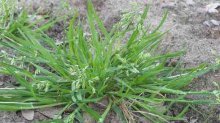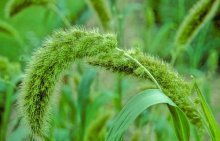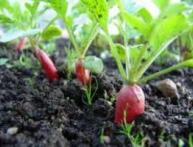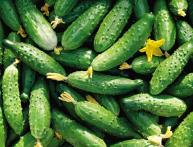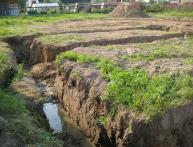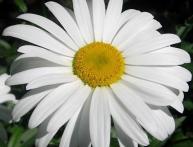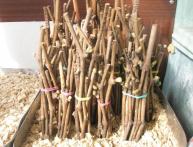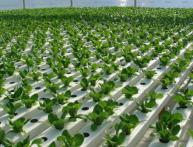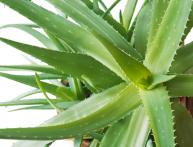Dicotyledonous weeds: description, control measures

Plants that are not cultivated by humans, but accompany the planting of agricultural crops, are classified as weeds or weeds. Some of them enter agricultural lands from the environment, with seed material, and are carried by animals and birds.
All weeds negatively affect the quantity and quality of the harvest, reducing it by 10 - 50%. Weeds can be annual, biennial or perennial. Based on the structure of the seeds of angiosperms, weeds are distinguished between monocotyledonous and dicotyledonous weeds. The presence of two seed lobes in representatives of the dicotyledonous class provides their seeds with a large supply of nutrients, which in turn gives more powerful growth to both the root and the above-ground part of the stem.
When seeds germinate, dicotyledons produce a stem with two germinal leaves (according to the number of lobes). The true leaf begins to form from the bud located between them. In monocots, as a rule, true leaves emerge immediately. Also, most dicotyledonous weeds have a powerful tap root that goes to a sufficient depth. In order to timely carry out agrotechnical measures to combat weeds of the dicotyledonous class, we will consider typical representatives characteristic of most areas.
Content:
- Annual and biennial dicotyledonous weeds
- Perennial dicotyledonous weeds
- Measures to control dicotyledonous weeds
Annual and biennial dicotyledonous weeds
- Blue cornflower is a weed with a stem up to 90 cm high, germinates in May, blooms in June - September. Cornflower flowers are blue, dark blue, and violet. The seeds are very small and ripen in large quantities, up to 1500 per flower. Seeds remain viable in a dry state from 3 to 10 years. Blue cornflower usually infests cereal crops.
- Highlander - a powerful plant more than a meter in height. The flowers are pink, greenish pink, collected in long racemes. Knotweed is even more fertile, producing up to 3,000 seeds with a maximum viability of up to 10 years. Accompanies the planting of vegetable, oilseed and legume plants.
- Euphorbia - sungazer - a strong plant up to half a meter high, with elongated leaves and a powerful, well-developed root. Germinates in May and blooms all summer. The low germination of seeds is compensated by their huge quantity. Prefers to grow among grains, legumes, and forage crops.
Also common annual dicotyledonous weeds include:
- pigweed
- forget-me-not
- sow thistle
- nightshade
- henbane
- shepherd's purse
It should be remembered that dope, nightshade, henbane are dangerous poisonous plants.
Perennial dicotyledonous weeds
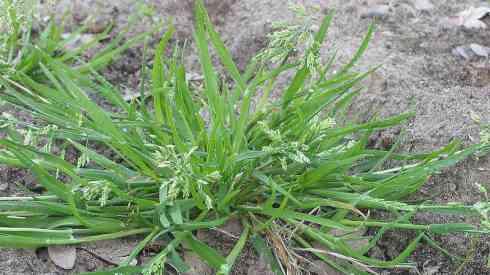
Dandelion officinalis is a ubiquitous plant, the elongated leaves are collected in a basal rosette, the flowers are bright yellow, the seeds are easily dispersed by the wind. Found in garden and fodder crops.
Wormwood is a powerful, tall, shrub-like plant. Germinates in May, blooms in July - August. Capable of germinating from a depth of up to 10 cm. Produces several tens of thousands of seeds. Contaminates grains, legumes, fodder, and garden crops.
Euphorbia vine is a weed that reproduces not only by seeds, but also by root suckers. Even a small remnant of the root makes it possible for milkweed to grow throughout the entire area of the site. Accompanies almost all garden crops.
This group of weeds also includes:
- big plantain
- field sow thistle
- mouse peas
- creeping clover
- buttercup
- creeping buttercup
The vitality and high fertility of dicotyledonous weeds can not only reduce productivity, but also negatively affect the resistance of cultivated plants to diseases and pests. Therefore, timely removal from the site is required.
Measures to control dicotyledonous weeds
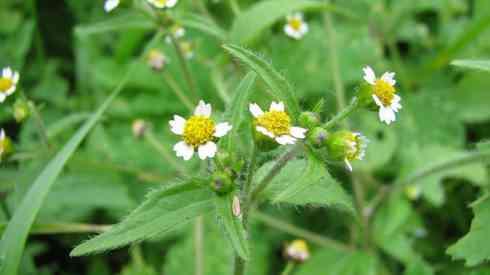
Mechanical measures consist of removing weeds, their underground and above-ground parts. This can be done either manually, in small areas, or using hand tools:
- chopper
- root removers
- flat cutters
In areas up to one hectare, it is advisable to use walk-behind tractors for weeding.
special attachments. Covering row spacing with light-proof material will significantly reduce the number of weeds on the site.
Chemical methods - treating agricultural land with herbicides that are destructive to dicotyledonous weeds. The land is treated with soil herbicides before sowing, or before the seeds of cultivated plants germinate, or in the fall, after harvesting. Penetrating to a depth of several centimeters, they destroy weed seeds before they germinate. The following drugs are used against dicotyledonous weeds:
- Pioneer
- Command
Post-emergence herbicides can be divided into continuous action and selective action herbicides. Continuous action chemicals, as a rule, destroy both weeds and cultivated plants.These include:
- Roundup
- Hurricane
- Sniper
TO selective herbicides against dicotyledonous weeds include:
- Lontrel 300
- Lapis lazuli SP
It is worth saying that if the recommended concentrations and application rates are observed, modern herbicides do not harm human health. Sometimes it can be very difficult to control dicotyledonous weeds only by mechanical methods, because their seeds do not lose their viability for ten years, but the choice of methods to control them remains with the gardener.
Video about weed control on the site:
Interesting information about the vegetable garden

